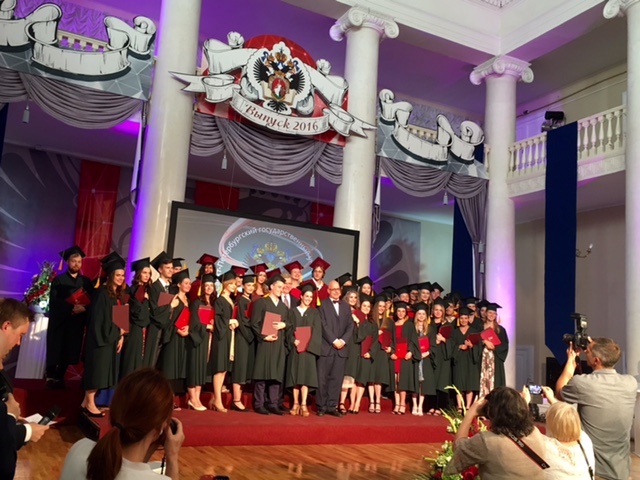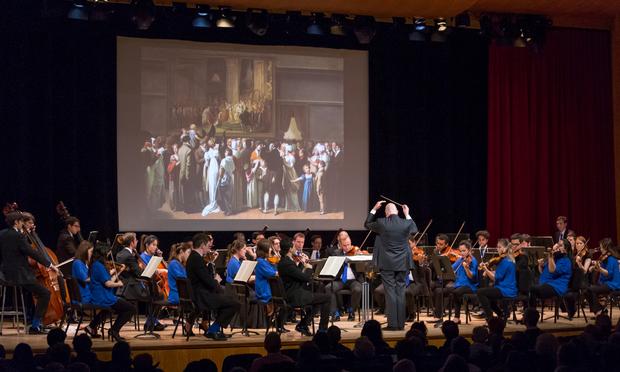Written for the concert Russia's Jewish Composers, performed on December 17, 2015 at Carnegie Hall.
The history of the Jews in Russia, before and during the first decades after the 1917 revolution, is a complex amalgam of segregation, poverty, exclusion, persecution, and extraordinary intellectual and cultural achievement both within the confines of Jewish society and culture and also outside in the larger non-Jewish Russian world. The significance of Russian Jewry to the development of modern Russian culture, and indeed to the central elements of the modern Russian national self-image, cannot be overestimated.
It is therefore not surprising that from the very start of communism and the Soviet Union, Jews were treated as a distinct nation rather than a religious group, comparable to the Georgians or the Armenians. Jews were given status as such. Yiddish rather than Hebrew was considered the Jewish national language and under Soviet rule (until the devastating purges of the late 1940s during Stalin’s final years), the Yiddish language, and the theatre and music associated with Yiddish culture, received extensive state patronage. The supposed elevation of Jews to a national status, however, was both ambivalent and disingenuous. It was designed to blunt the allure of Zionism and Hebrew, as well as to circumvent, with a fatal embrace, the hope that under communism, anti-Semitism would disappear. The official recognition of Jewish nationality actually insured the persistence of anti-Semitism; after all, on all official documents, including passports, one’s nationality was identified. Every Jew was labeled as such.
All the composers on this program were Russian Jews by birth. The oldest is the piano virtuoso, conductor, and composer Anton Rubinstein, whose fame—particularly in the United States—was legendary. Rubinstein, who taught Tchaikovsky, also was chosen to lead the celebrated Gesellschaft der Musikfreunde in Vienna. His works won wide acclaim. Posterity, however, has been less kind. Despite its once enormous popularity, his “Ocean” symphony has lapsed into obscurity, together with the rest of his orchestral oeuvre. Rubinstein’s family (including his almost equally famous musician brother Nikolai) converted from Judaism when Anton was a young boy. Anton was brought up as a Christian but like so many converts, he realized that baptism was never a cure or antidote for anti-Semitism, since the prejudice was racial and political, not theological: once a Jew, always a Jew. Anton Rubinstein is alleged to have observed, “Russians say I am German, Germans think me Russian, Jews call me a Christian, and Christians say I am a Jew.”
The fact is that more of Rubinstein’s music deserves to be played, as this concerto for cello and orchestra makes clear. Rubinstein’s musical output was enormous. Much of the best music was dramatic music written for the stage. A vast number of dramatic works with a “Jewish” connection appear in Rubinstein’s catalogue, including an opera on the Maccabees, works on the Tower of Babel, and Moses, all alongside works explicitly on Christian subjects (most notably a setting of Paradise Lost). In the late-19th-century debate on what ought to be truly “Russian” music, Anton Rubinstein was unfairly derided as a second rate purveyor of German musical traditions.
Two of the Russian Jewish composers on this program are represented with works written when they were young. Both Krein and Gnesin became prominent for their contributions as explicitly “Jewish” composers. Both men, influenced by Rimsky-Korsakov, celebrated the folk roots of their own specific national origin as Jews. They became leading members of the legendary and seminal St. Petersburg Society for Jewish Folk Music, founded in 1908.
Yet the works on this program remind us that their distinction and contribution as composers were not limited to the extent to which they utilized their Jewishness in their music. It is easy to overlook the extent of acculturation and symbiosis between the Jewish and the Russian in ways that bypassed the Fiddler on the Roof stereotype; we associate that process of cosmopolitan intermingling more readily with the historical dynamics between Jews and non-Jews in German speaking Europe before 1933. Krein and Gnesin absorbed and extended—as did their contemporaries Joseph Achron, Lazare Saminsky, and Sergei Prokofiev—the influence of symbolism and of Scriabin and Rimsky. Gnesin and Krein, at the time they wrote the works on this program, were Russian cosmopolitan advocates of an avant-garde first and Jewish culture second.
The last work on the program is by a rival and contemporary of Stravinsky’s, Shostakovich’s teacher Maximilian Steinberg. One of the ironies of history is that Steinberg’s ballet Metamorphosen was scheduled for the same 1913 season as the Rite of Spring, and Stravinsky, who was jealous that Rimsky favored Steinberg and that Steinberg married Rimsky’s daughter, did everything he could to thwart Steinberg’s competing work.
Steinberg was the son of a major Hebrew scholar. Despite his extensive background in Jewish history and culture, unlike Krein and Gnesin, but rather more as a latter day Anton Rubinstein, Steinberg did not privilege his Jewish identity in his work and chose a quite eclectic array of inspirations for his music—from Uzbek folk material to the legend of Till Eulenspeigel. As Steinberg’s early symphonies—and the 1913 ballet score—suggest, the talent and facility of the young composer were extraordinary, as was his familiarity with the compositional traditions of Western Europe and Russia.
Steinberg is most often remembered not for his music but indirectly, first on account of his place in Stravinsky’s life, and second, because of his connection to Shostakovich. He deserves more. Nonetheless, perhaps the most admirable indirect consequence of Steinberg’s career derives from the Shostakovich connection, not the link to Stravinsky. Shostakovich was rather the exception among Russian composers in his complete lack of anti-Semitism. Indeed Shostakovich identified with the plight of the Jews. He showed rare courage in his support of the family of Solomon Mikhoels, the great Yiddish actor who was killed by Stalin in 1948, and his protective advocacy of and friendship with the Polish Jewish composer Mieczysław Weinberg, who settled in Russian after 1945. Perhaps it was Shostakovich’s admiration and affection for his teacher that sustained his decency and courage on this issue.
Together, these four Russian composers, whose life and career span the second half of the 19th century and the first half of the 20th—arguably the heyday of classical musical culture—reveal the extent of acculturation, integration, and participation in Russian intellectual and artistic life by Jews. We have the unfortunate tendency to reduce the complexity of the past to stereotypes. The Jews of Russia evoke—legitimately—the image of mass poverty, the shtetl, sardonic humor, klezmer and Yiddish eloquence: a distinctly Jewish culture born out of the unique experience of the Pale Settlement. It is to those roots that Krein and Gnesin—much like the young painter Marc Chagall—eventually turned in search of a unique source for a modern art and culture of their own. By so doing they were following a parallel pattern of discovery that would become audible in the music of Bartók and Stravinsky.
This concert reminds us that in literature, science, art, and above all music, there was a Russian Jewish elite, fully conversant with Russian and European traditions that made seminal contributions to the mainstream of culture and art without foregrounding or even referencing their status as Jews. That remarkable achievement by an extraordinary elite is highlighted on today’s concert program.



